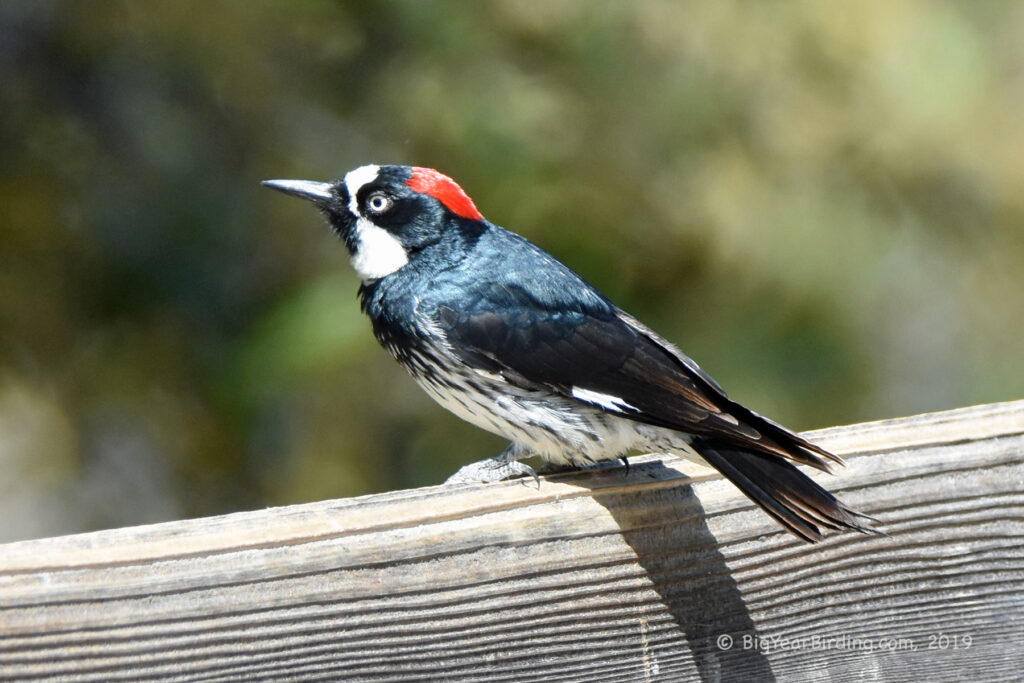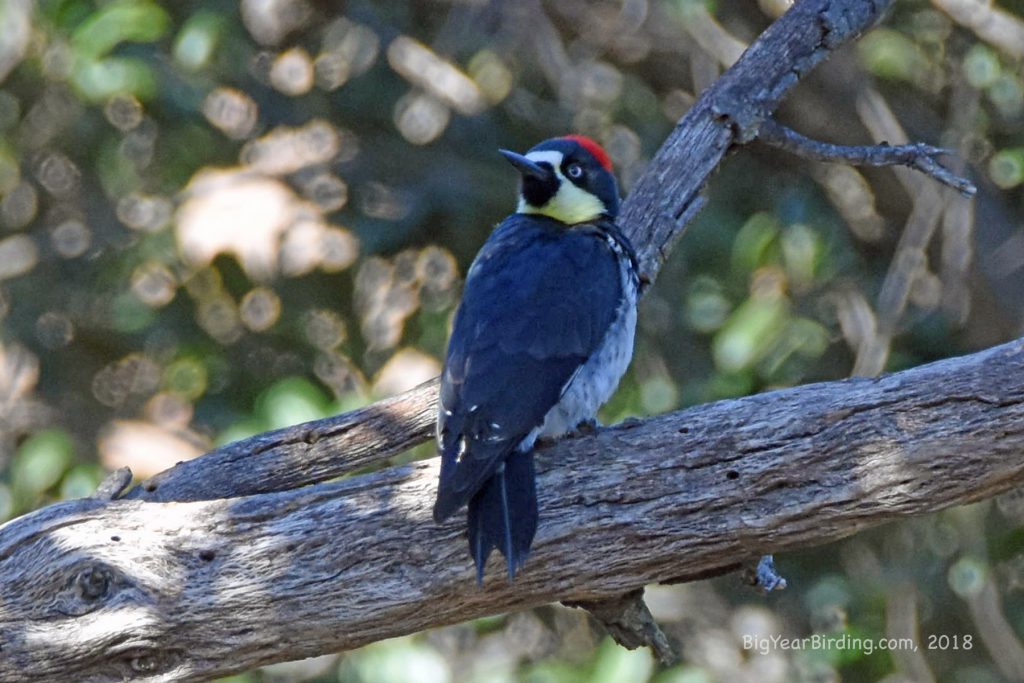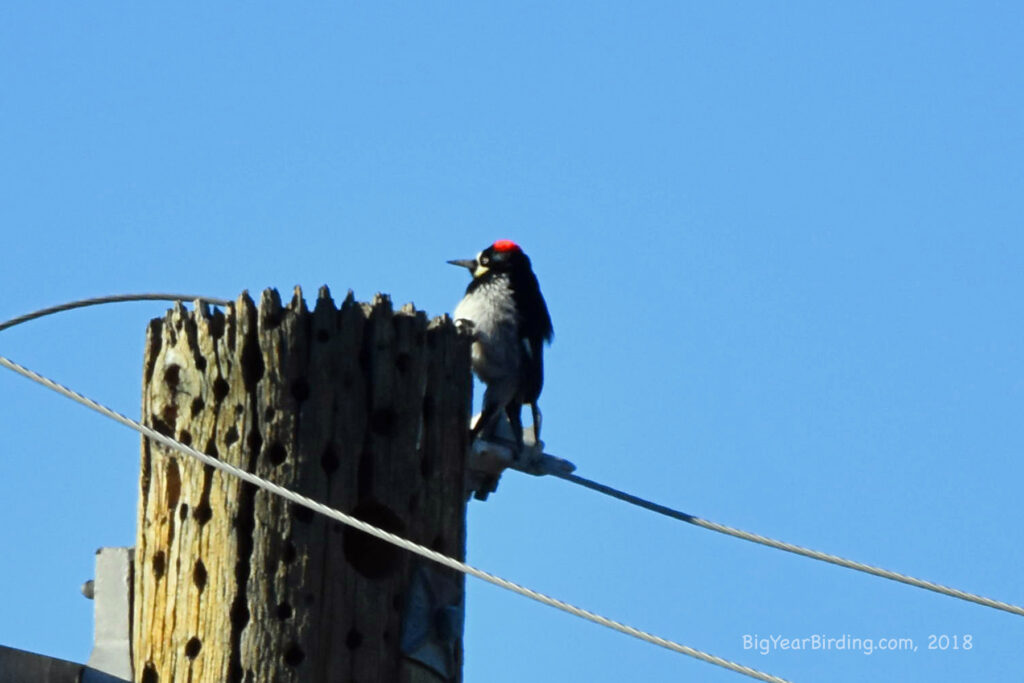
The Acorn Woodpecker is a medium-sized bird species native to North America, with a length of approximately 9-10 inches and a weight of 2-3 ounces. This species is easily recognizable by its distinctive black and white plumage, with a white forehead, black crown, and a white neck patch. The male has a red cap on the back of its head, while the female has a patch of red feathers near the nape of the neck.

One of the most distinguishing field marks of the Acorn Woodpecker is its woodpecker-like bill, which is long, straight and pointed, and used for drilling holes into trees to store food. Another notable feature is its white tail feathers, which are flicked upwards when the bird is in flight. The bird’s white feathers and black markings create a striking contrast and are easily visible in its natural habitat, making it an easy species to spot for bird watchers.
The Acorn Woodpecker primarily inhabits oak woodlands and pine forests in the western United States and Mexico, and is known for its acorn storage behavior. The bird drills small holes into trees and stores acorns in them, which it uses as food sources during the winter months. The Acorn Woodpecker is also known to be a social species, often forming communal roosts and sharing food with members of its group.

Although the Acorn Woodpecker is not a migratory species, its populations may move within its native range in response to changes in food availability or other environmental factors. During the winter months, when food supplies are limited, the birds may move to lower elevations in search of food. On the other hand, during the summer months, when food is more abundant, the birds may move to higher elevations to breed and raise their young.
In conclusion, the Acorn Woodpecker is a unique and fascinating bird species that is easily recognizable by its distinctive black and white plumage, woodpecker-like bill, and white tail feathers. Its acorn storage behavior and social behavior make it an interesting species to observe and study, and its non-migratory habits make it a year-round resident in its native range.

